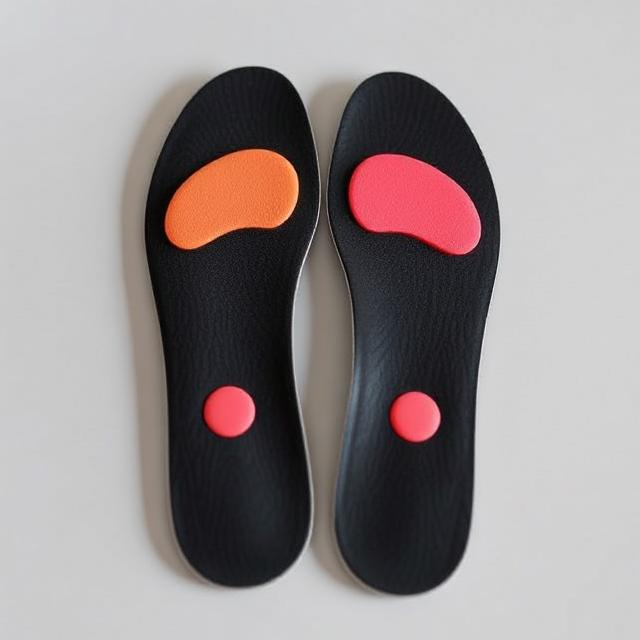Orthotic insoles are a game-changer for those who need extra foot support, whether for work, sports, or daily activities. But how long should orthotic insoles last before they need replacement? The answer depends on various factors like material quality, usage, and maintenance. Proper care can extend their lifespan, saving you money while keeping your feet comfortable. In this guide, we’ll cover the expected lifespan of orthotic insoles, signs of wear, and maintenance tips to keep them in top shape.
How Long Do Orthotic Insoles Typically Last?
The average lifespan of orthotic insoles ranges from six months to two years, depending on their quality and usage. Custom orthotics tend to last longer than over-the-counter insoles because they are made with durable materials. However, high-impact activities like running or heavy work may shorten their lifespan.
What Factors Affect the Lifespan of Orthotic Insoles?
Several factors determine how long your orthotic insoles will last:
- Material Quality – Premium insoles made of carbon fiber or EVA foam last longer.
- Usage Frequency – Daily use wears them out faster than occasional use.
- Activity Type – High-impact activities like running or sports increase wear and tear.
- Footwear Compatibility – Properly fitting shoes help extend insole life.
- Maintenance and Care – Regular cleaning and drying prevent material breakdown.
Signs Your Orthotic Insoles Need Replacement
1. Flattened Cushioning
If your insoles feel less supportive and don’t spring back, they’ve lost their effectiveness.
2. Visible Wear and Tear
Look for cracks, holes, or worn-out areas, especially in high-pressure zones.
3. Foot Pain or Discomfort
If you start experiencing foot pain despite wearing insoles, they may no longer provide adequate support.
4. Unpleasant Odor That Won’t Go Away
Persistent odor, despite cleaning, is a sign that bacteria and moisture have damaged the material.
5. Shoe Fit Feels Different
If your insoles feel thinner and your shoes don’t fit as well, it’s time for a replacement.
How Can You Make Orthotic Insoles Last Longer?
Taking care of your orthotic insoles can help extend their lifespan. Follow these simple maintenance tips:
1. Rotate Between Pairs
If you wear orthotics daily, having two pairs can reduce wear and extend their life.
2. Remove Insoles After Use
Taking out insoles after wearing your shoes allows them to air out and stay dry.
3. Clean Regularly
Wipe insoles with a damp cloth and mild soap weekly to prevent bacteria buildup.
4. Let Them Dry Properly
Avoid exposing insoles to direct heat. Let them air dry naturally to prevent material breakdown.
5. Store in a Cool, Dry Place
Keeping your insoles in a moisture-free environment prevents mold and bacteria growth.

Can You Wash Orthotic Insoles?
Yes, but with caution. Most orthotic insoles should be hand-washed with mild soap and lukewarm water. Avoid soaking them or using harsh chemicals, as this can damage the material. Let them air dry completely before placing them back in your shoes.
How Often Should You Replace Orthotic Insoles?
It depends on your activity level and insole quality. Generally:
- Casual users – Replace insoles every 12 to 24 months.
- Athletes or high-impact users – Replace insoles every 6 to 12 months.
- Work boot users – Replace insoles every 6 to 18 months, depending on work conditions.
Do Different Types of Orthotic Insoles Last Longer?
Yes, the durability of insoles depends on the type:
- Foam Insoles – Offer great comfort but wear out faster (6-12 months).
- Gel Insoles – Provide shock absorption but can break down over time (8-18 months).
- Custom-Made Insoles – Last the longest due to high-quality materials (1-5 years).
What Happens If You Don’t Replace Worn-Out Insoles?
Using old or worn-out insoles can lead to:
- Increased foot pain and discomfort
- Poor posture and misalignment
- Higher risk of injuries like plantar fasciitis
- Reduced shoe support and stability
Are There Any DIY Methods to Extend Insole Life?
Yes! You can try these tricks:
- Use a fabric spray to refresh insoles and reduce odor.
- Add a thin cushioning layer underneath if the top layer flattens.
- Apply talcum powder to absorb moisture and keep them fresh.
How Do You Choose Long-Lasting Orthotic Insoles?
Look for these features when buying new insoles:
- High-quality materials (EVA foam, carbon fiber, gel)
- Reinforced arch support for better durability
- Breathable design to reduce sweat buildup
- Shock absorption for high-impact activities
Are There Specific Brands Known for Durable Insoles?
Yes, some brands offer longer-lasting orthotic insoles. Aline Insoles is a great option, known for its high-quality materials and ergonomic design that provides long-term foot support.
Conclusion
Orthotic insoles typically last between six months and two years, depending on usage and maintenance. Keeping them clean, rotating between pairs, and replacing them when necessary ensures consistent foot support. If you’re looking for a reliable option, Aline Insoles is a great choice for long-lasting comfort and durability.

0 Comments